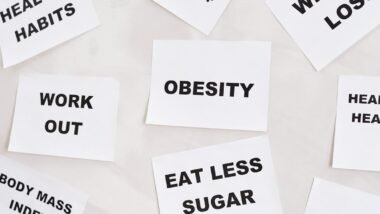Stress Management Strategies
Managing stress effectively is crucial for overall health and can significantly impact body weight, particularly in the abdominal area. Incorporating mindfulness practices such as meditation and deep-breathing exercises can help reduce stress levels. Engaging in regular physical activity not only improves physical fitness but also serves as a natural stress reliever. Activities like yoga and tai chi have shown to be particularly effective in lowering cortisol levels, the hormone often linked to stress-related weight gain.
Establishing a routine that prioritizes relaxation and mental well-being is essential. Scheduled breaks throughout the day allow for reflection and can prevent feelings of overwhelm. Social connections also play a vital role in stress management. Surrounding oneself with supportive friends and family offers an emotional cushion and can help mitigate stress triggers. Balancing work and personal life through time management strategies can contribute to a more relaxed state of being, further aiding in the fight against belly fat.
This new blog post covers this topic in more detail.
The Connection Between Stress and Belly Fat
Stress triggers a complex hormonal response in the body, leading to the release of cortisol, often referred to as the stress hormone. Elevated cortisol levels can impair the body’s ability to regulate fat storage, particularly in the abdominal area. When stress becomes chronic, the continuous high levels of cortisol can prompt cravings for calorie-dense comfort foods, further contributing to weight gain around the belly. This physiological response can make it increasingly difficult to achieve fat loss goals.
Additionally, stress can affect sleep quality and exercise motivation, compounding the issue. Individuals under stress may find themselves opting for sedentary behaviors instead of engaging in physical activity. The combination of hormonal changes, unhealthy eating habits, and reduced physical activity creates an environment conducive to fat accumulation. Understanding these links can help individuals take targeted steps to manage stress effectively, ultimately supporting their efforts to reduce belly fat.
The Significance of Consistency
Achieving lasting fat loss, particularly around the belly, hinges on maintaining consistency in both diet and exercise. Many individuals stumble when they embark on rapid weight-loss plans that promise quick results. These short-lived strategies often lead to disappointment and can even contribute to a cycle of weight gain. Consistency allows the body to adapt to lifestyle changes, making it easier to develop healthier habits over time.
A sustainable routine, built on regular meal patterns and scheduled physical activity, lays the foundation for success. Sticking to a consistent plan fosters accountability and helps track progress, making it easier to identify what works and what doesn’t. Gradual changes often yield better results as they are more manageable and easier to maintain long-term. Embracing this steady approach can enhance motivation and contribute to an overall sense of well-being.
Creating a Sustainable Routine for Fat Loss
Establishing a routine that you can maintain over the long term is essential for effective fat loss. This involves integrating a balanced diet with regular exercise tailored to your preferences and lifestyle. Start by setting realistic goals that align with your daily schedule. Small, incremental changes can lead to significant improvements over time. Ensuring that your routine is enjoyable will encourage adherence and prevent burnout, making it easier to stay on track.
Consistency is key to seeing results. It’s important to create a schedule that allows for flexibility while still encouraging accountability. Consider meal prepping for your week, which can streamline your healthy eating efforts. Incorporating workouts that you find engaging can also make a difference in sticking with your plan. Staying mindful of progress, celebrating small victories, and adjusting your routine as needed can help keep motivation high and foster lasting results.
The Influence of Genetics
Genetics plays a crucial role in determining how and where fat is distributed in the body. Some individuals may be predisposed to carrying excess weight around their midsection due to inherited traits. Studies suggest that specific genes can influence metabolism, fat storage, and body composition. Understanding these genetic factors can provide insight into why some people might struggle more with belly fat than others.
The impacts of genetics on fat distribution vary considerably among individuals. While some may find it challenging to lose weight due to their genetic makeup, others might have a higher propensity for lean muscle mass. This variation emphasizes the importance of personalized approaches to weight loss and fat management. Acknowledging one’s genetic predispositions can lead to tailored strategies that align with individual body types, promoting effective fat loss while encouraging overall well-being.
Understanding Your Body Type and Fat Distribution
Body type plays a significant role in how fat is distributed and stored. Some individuals may find that they naturally store fat around their midsection, while others may accumulate it in the hips or thighs. This distribution can be influenced by genetics, hormone levels, and metabolism. Understanding one’s unique body composition can help tailor fat loss strategies for better results.
Recognizing body type also assists in setting realistic goals. People with a higher proportion of body fat in their midsection, often referred to as an apple shape, may need to adopt specific lifestyle adjustments compared to those with a pear shape, who typically carry more weight in their lower body. By acknowledging these differences, individuals can choose more effective workout routines and dietary plans that enhance overall health while targeting their specific concerns related to fat distribution.
FAQS
What are some effective stress management strategies to reduce belly fat?
Effective stress management strategies include practicing mindfulness and meditation, engaging in regular physical activity, maintaining a balanced diet, and ensuring adequate sleep. These methods can help lower cortisol levels, which are linked to increased belly fat.
How does stress contribute to belly fat accumulation?
Stress can lead to increased levels of the hormone cortisol, which may promote fat storage, particularly in the abdominal area. Additionally, stress can trigger emotional eating or the consumption of unhealthy foods, further contributing to belly fat.
Why is consistency important in fat loss efforts?
Consistency is crucial because sustainable fat loss requires a long-term commitment to healthy habits. Regular exercise, balanced nutrition, and stress management need to be practiced consistently to see significant changes in body composition over time.
How can I create a sustainable routine for burning belly fat?
To create a sustainable routine, start by setting realistic goals, incorporating a variety of exercises (including cardio and strength training), planning healthy meals, and establishing a regular sleep schedule. It’s also important to stay flexible and adjust your routine as necessary to maintain motivation.
Can genetics influence belly fat distribution?
Yes, genetics play a significant role in determining body type and fat distribution. Some individuals may be genetically predisposed to store fat in the belly area, which can affect how easily they lose weight. Understanding your genetic factors can help you tailor your fat loss approach more effectively.
Related Links
tips to lose weight fast in a month
How to lose 20 pounds in a month?
What’s the fastest way to lose weight in a month?


